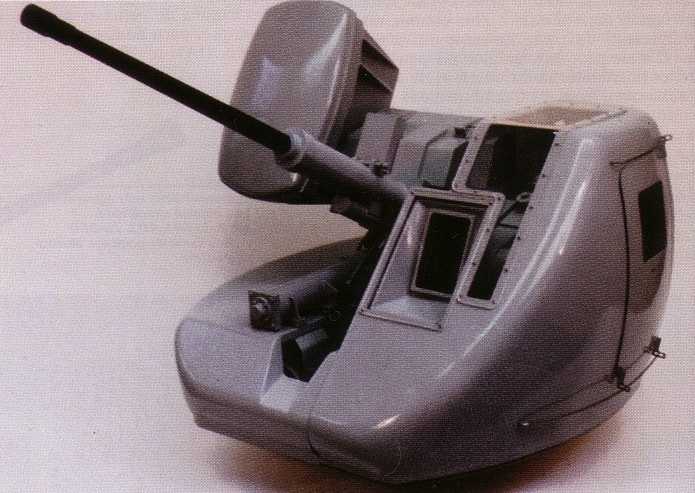|
Although an impressive AA gun in the late 1940 to 1960 time frame, the value of such MG AA weapons has decreased since World War II with the increasing sophistication of stand-off anti-ship weapons such as the USA's Harpoon. For that reason, Bofors has developed more sophisticated ammunition such as the 3P round which can be set for point contact or proximity detonation. These improvements, together with a better FCS, allow these weapons to be used against sub-sonic cruise missiles although they are more often intended to be used against small surface craft. In the late 1980s Bofors upgraded the design of the 40 mm/70 to allow higher rates of fire and improve reliability. The Mark 3 can be integrated with any analog or digital fire control system. This mounting is normally unmanned and controlled from the combat information center but can be locally controlled from an on-mount operator's console for aiming and will remain fully stabilized by the gun's local gyros. In case of total power supply failure, the gun can be layed and fired manually. A radar on the gun barrel is used for correcting the FCS solution. The Mark 4 is an improved version of the Mark 3 and has replaced the hydraulic drives of earlier designs with all electric motors which reduces the flammability of the mounting and improves reliability. Neither of these mountings have any deck penetration except for electrical connections. Breda has produced their own versions of the 40 mm/70 under license since 1969. The company has specialized in automatic loading mechanisms which are also used for their own designs, as can be seen on the 40 mm/70 OTOBreda page. Bofors was purchased by United Defense which was in turn bought by BAE Systems. |

40 mm/70 Sea Trinity Mockup
|
| .
|